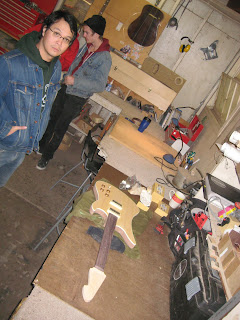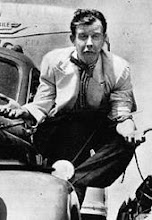I signed up for an elective crash course in amplifier construction here at R-V. Over the course of two weekends, we'll be building a replica of the famous Fender Deluxe amp. The original 50's era Fender amps personify "the Fender sound" to many folks, and have long been favored in the studio for their rich tonal characteristics and low volume (which makes the recording process that much easier). While they're not particularly loud, they are absolutely chock-full-o-tone. Fender's tweed amps (known as such for their tweed fabric covering) were there when many rock n' roll classics were recorded: Buddy Holly, Chuck Berry, Gene Vincent, BB King etc. It's a sound we all know, if only on a subconscious level. The first time you plug into one, I guarantee a smile will pop across your face. It's a, "oh, THAT'S why everyone makes such a big deal about this amp" kind of experience.
Today, these classic amps are rare and costly, not to mention unreliable due to their old age. Over the last 15 years, there has been an explosion of small, boutique amp builders who offer a variety of the classic amps from Fender's 50's tweed era. (And yes, boutique means expensive.) The amp we're building, a copy of a Fender's 1959 5E3 Tweed Deluxe, is a benchmark for guitarists. It's a simple design and one that allows the builder a lot of room to swap components and really dial in the desired tone. Fender was one of a handful of companies that built both guitars and amps and as such, voiced both to suit each other beautifully.
First, a quick inventory of parts:
Schematic of the circuit:
In other news, the acoustic reached a major milestone today: the top, back and sides are finally glued together. Below is a pic of these three parts before gluing it all together. The bracing, sound hole rosette, joining the top and back plates, bending the sides etc are just some of the steps that we've taken to build these parts to the point where they are ready to be glued together and form an acoustic body.
The back gluing in on the go-bar deck:
Behold, the birdhouse:
The electrics continue on towards completion. Here's another student in the spray booth, lacquering his guitar:
Below, electrics hanging on the rack to dry. Mine is in the center, prior to the amber tint top coat:
If all goes well, I'll finish the last couple coats of lacquer tomorrow at which point the guitar will hang for two weeks while the finish cures...

























































